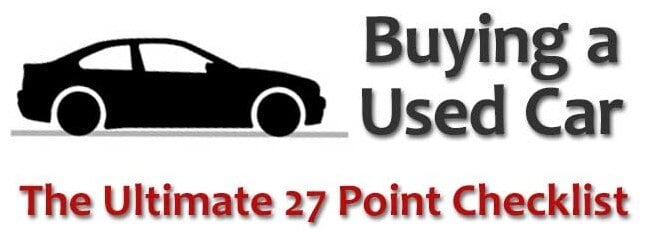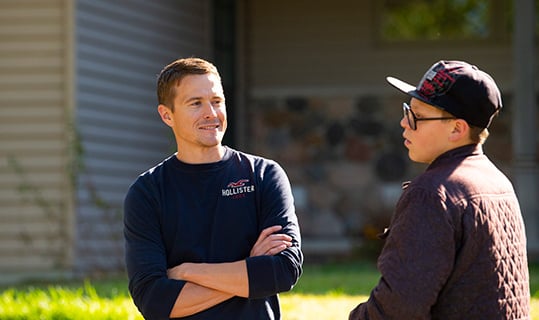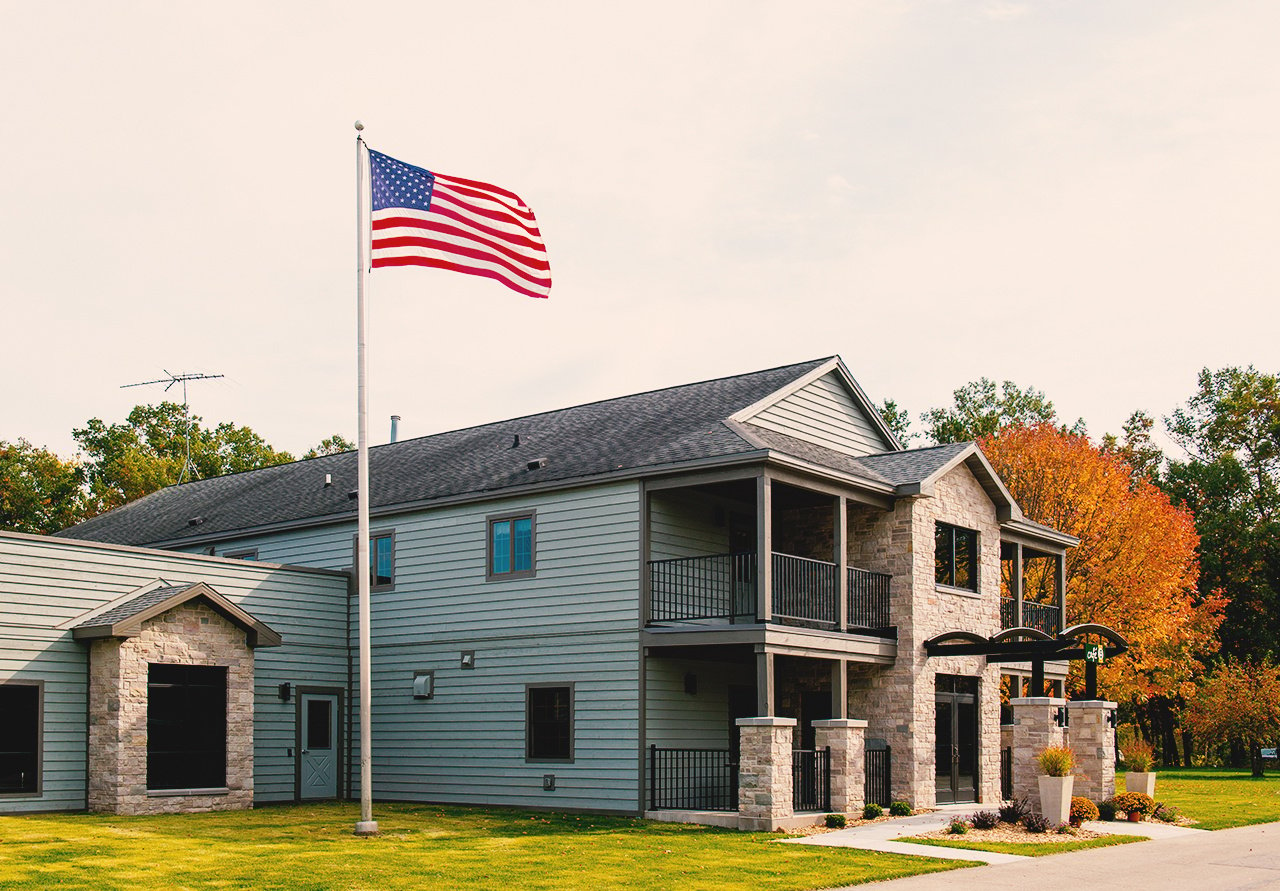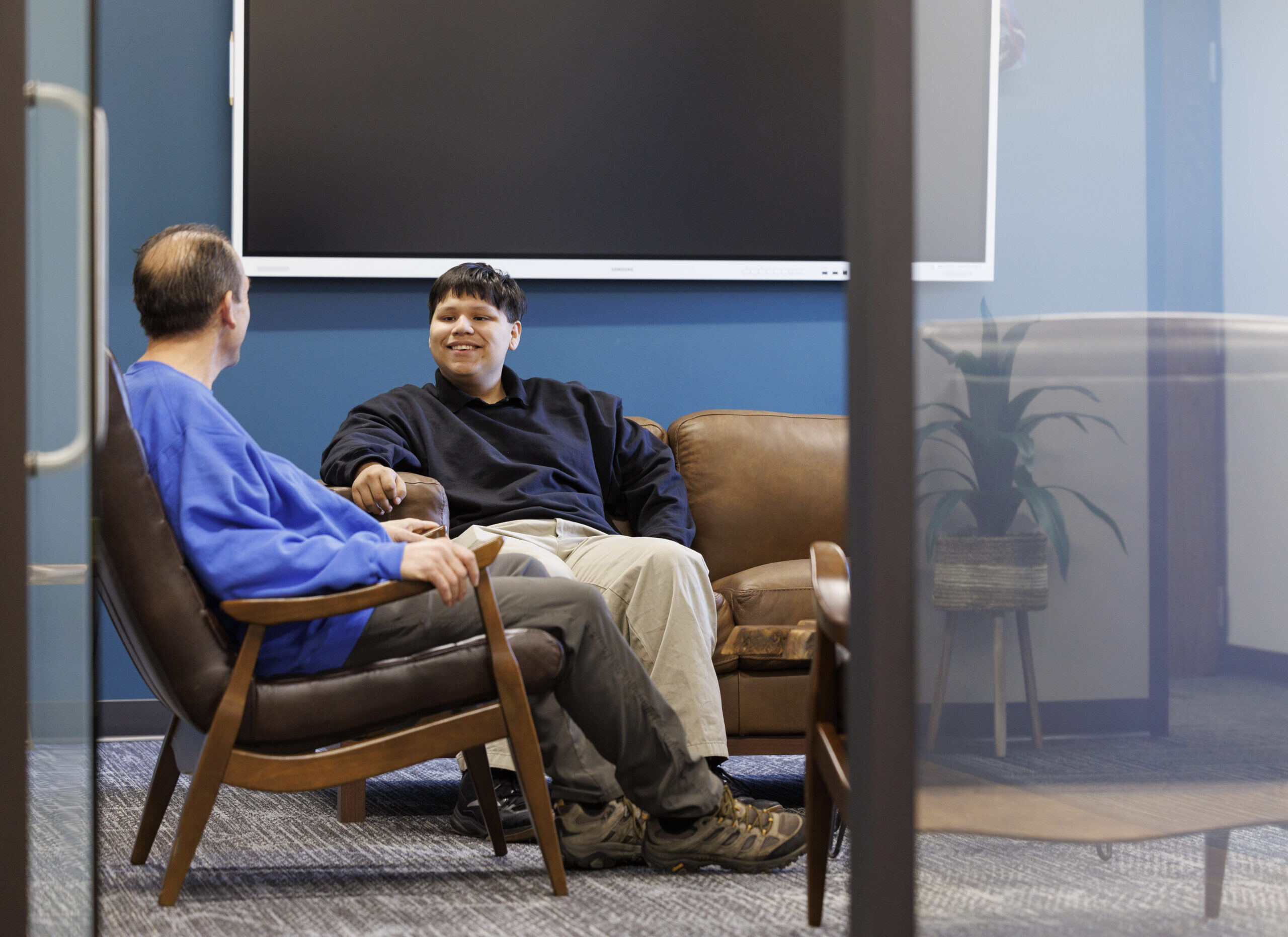
For many people, buying a used car is daunting. No one wants to be stranded with a lemon, paying for costly repairs the day after they drive the car off the lot. Good news. Buying a used car does not need to be the crap shoot it once was. You just need to know what to look for and what questions to ask.
This 27-point checklist will show you things to check when buying a used car.
What to Check When Buying a Used Car – The Ultimate 27 Point Checklist
1. How Much Car Can You Afford?
A car payment should not be more than 20% of your net take-home pay. You can use Edmund’s “How much can I afford” calculator to determine your ideal price range.
2. Research the Right Used Car for You
Finding out how much you want to spend was the easy part, now you need to identify the right used car for you.
- First, make a list of all the things you need your vehicle to do (haul a trailer, go off-road, get great gas mileage)
- Then make another list of items you want your car to have (color, body style, luxury items, add-ons)
Step back and look at both lists when deciding on which used car to buy. It will allow you to separate the must-haves from really-wants. This way you can make smart trade-off decisions.
3. Bring a Friend Who Knows Cars
An easy way to know what to check when buying a used car is to bring along a friend who knows cars. He or she will possibly spot red flags. If you don’t have a car-savvy friend, tell the seller you want to get a mechanical inspection. This inspection, which typically costs $150-$200, could save you from buying a lemon and being out more money. If the seller objects, odds are there is something wrong with the vehicle.
4. Make Sure the Car is Resting on Level Ground During Inspection
Check to see if the vehicle rests properly on level ground. If the car leans to one side, it might indicate a binding shock absorber or strut, a bad spring or torsion bar, bent suspension parts, or even a twisted chassis. All of these can lead to major ongoing repairs.
5. Look for Under-Body Rust and Leaking Fluids
Rust on the vehicle indicates a breakdown of metal. Over time, rust can eat through the door, floorboards, body, frame, and chassis.
- Check underneath the car, hinges, and door edges for rust
- Lift up the pad or carpet in the trunk and check for rust in floorboards
- Check for leaking fluids under the car
6. Examine the Exhaust System
Black spots or greasy grime on the exhaust are big red flags. If white vapor is coming from the exhaust, you could have a blown head gasket or be burning oil. These issues may require replacing the exhaust system which can cost over $2,000.
7. Examine the Frame of the Car
Checking the frame will reveal if the car has been in an accident and is one of the most important items on the checklist for buying a used car. A damaged frame, if not repaired properly, can reduce the car’s ability to protect you in an accident.
- Inspect the car’s “saddle” (the framework that connects the front fenders and holds the top of the radiator) to make sure it’s bolted – not welded – on both sides. Welding indicates parts were replaced after a crash.
- Examine the bolt heads for scratch marks. These are located at the top of the fenders inside the hood.
- Finally, inspect the door jambs for welds. Any scratch marks on bolt heads or welds to the saddle or door jambs, indicate a prior accident.
8. Inspect the Glass
Look for chips or cracks in the glass. A tiny windshield chip might not seem like a big deal, but it could spread, causing poor visibility or shattering in an accident.
Some states have laws making it illegal to drive with a cracked windshield.

9. Does the Used Car Pass Required Smog or Emissions Tests?
Understand the smog or emissions restrictions where you live to make sure the vehicle fits the requirements. Repairing emissions is challenging even for veteran technicians and can be costly. The penalty fee for not being compliant will hurt your wallet even more.
10. What’s Under the Hood?
An important tip to buy a used car is to make sure the vehicle has been taken care of properly.
- Check under the hood for rust, dents, visible damage, or even animals living there (it happens).
- Examine the fenders for a decal containing the Vehicle Identification Number (VIN). If the decals are missing, chances are that the fenders have been replaced due to an accident.
Consider Donating a Car, Truck, Boat, RV, or Other Motorized Item
Vehicle Donation Form
11. Inspect the Engine for any Leaks, Corrosion, Funny Sounds, or Smells
View this video to learn how to check car fluids, belts, and perform full under-hood inspection.
Dark brown oil stains on the engine block indicate a leaky oil pan gasket. Check to see if the previous owner has documentation of oil changes, radiator flushes, any repairs, or any other regularly required maintenance. Evidence of preventative maintenance can be helpful in your purchasing decision because regular maintenance extends the car’s “life.”
12. Check Hoses and Belts
The radiator hoses should not be soft or cracked. A bad radiator hose could burst, causing extensive damage to your vehicle.
Make sure belts are in good condition as well. If your serpentine belt breaks, your vehicle won’t be drivable. Make sure this one is at the top of checklist when looking at a used car.

13. Check the Color of the Transmission Fluid
This is a must-check when buying a used car. The transmission fluid should be pink or red. It may appear darker in older cars, but the fluid should never look black or smell burnt. Transmission fluid level should also be full. If the transmission stops working, it may be more cost-effective to buy another car than repair the damaged car.

14. Inspect the Interior for Unwanted Smells
When you first open the car, take a sniff. How does the car smell?
Any musty, moldy, or mildew smell could indicate water leaks or damage requiring repairs. Mold is a health hazard and may be hard to get out of the car.
Any acidic smoke could indicate the car was owned by a smoker. This smell can be difficult to eliminate.
15. How do the Seats Function & Appear?
This might not seem like the most important item on the buying a used car checklist, but you’d be surprised. Make sure the seats move and have no unsightly stains or odors. Will you be comfortable driving with the amount of head and leg room? If not, keep looking.
16. Are there any Warning Lights When You Turn on the Car?
Do any lights stay lit on the dashboard? A lit “check engine” light doesn’t always mean a serious problem. It could be due to a temporary condition such as a change in humidity or an unsecured gas cap.
Ask the seller how long it has been on, and note if the “check engine” light is solid or blinking. Generally, the latter is much more serious. A mechanic can tell you the cause by running a simple diagnostic test.
For questions regarding other lights, Auto Zone provides a handy guide.
17. Check the Brakes Thoroughly
Does the brake pedal vibrate? Does stepping on the brakes cause squealing or scraping sounds? If so, the car will require a brake repair or entire replacement. According to CostHelper.com, this could cost $130-$900.
No one wants to shell out for new brakes, rotors, and calipers right after buying a car!
18. Feel for Trepidation During Slight Accelerations
Observe the car’s performance when it reaches 45 / 55 / 65 / 75 MPH. Any trepidation might mean worn or dirty parts such as ball joints or control arms of the suspension system. Repairs could cost upwards of $1,500.
19. Listen for Vehicle Noises
Listen for clunks or other strange noises when you idle or accelerate. There should be no pings, pops, knocks, or backfires. If something doesn’t sound right, it probably isn’t.
20. Run the Heater / Air Conditioner / CD Player / Radio
This is a surprising, yet important tip when buying a used car. Make sure the amenities such as heat, air, radio, CD player work to your liking. While everything on this list might seem like a luxury, remember: not only do you want to get from point A to point B, but you also want to enjoy the ride.
Consider Donating a Car, Truck, Boat, RV, or Other Motorized Item
Vehicle Donation Form
21. Check the Car’s Make / Model Reputation
Search consumer reports, recall alerts, and news articles regarding the used vehicle you are considering. Certain vehicles had mass recalls that, if ignored, could be detrimental to your budget and safety.
22. Find a Vehicle History Report
History reports are inexpensive and provide valuable information for purchasing decisions. Reports include details on accidents, flood damage, number of previous owners, VIN verification, actual mileage, and recall checks. If you are considering buying a used car from a dealer, ask to see a vehicle history report from CARFAX or similar service.
23. Cross Check the Odometer with Preventative Maintenance Documents
The common perception has been that a car over 100,000 miles is not worth buying. The truth is, if the car was taken care of, it is very likely it can last well over 100,000 and possibly over 200,000. It’s also true that a car with very low mileage might not be a safe bet if it was poorly maintained or infrequently driven. Cars are designed to be operated on a somewhat regular basis.
Ask for preventative maintenance documentation. If regular oil changes and other maintenance were done, a car over 100,000 miles will likely last another 100,000.
24. Decode the Vehicle Identification Number (VIN)
When buying a used car look at the Vehicle Identification Number (VIN). Some scammers will replace the VIN of a stolen car with one that is legally registered. Check the VIN for consistency on all service records, history reports, title documents, and on the car itself (behind driver’s side windshield & body panels).
This VIN Decoding chart may also help.
25. Check the Tires
Examine tires for feathering, uneven wear, and diminished tread depth. These signs can indicate bad alignment or worn steering and suspension components. Remember to also check the spare tire’s tread. Not having to buy new tires can save you anywhere from $400-$800.

26. Test Drive the Car
Test driving a used car will tell you if it is comfortable to drive and if it’s in good condition. While on your test drive, simulate the conditions of your normal driving pattern. For example, if you drive a lot on the highway make sure you take the car up to 65 mph. If you regularly drive into the mountains test the car on steep slopes and windy roads.
Bonus Tip: If there is an air freshener hanging inside the car or the interior smells like it was recently sprayed with an air freshener, open the windows. After your test drive, the car will have aired out, and you’ll get a better idea of any lingering odors.
27. Negotiate the Price
You do not have to pay sticker price. Negotiation is important when buy a used car. Know the Kelly Blue Book value of the car so you can negotiate with confidence. Consider any needed repairs and factor that cost into the offer you make.
Negotiation tips:
- Make a low initial offer, slightly below the market values uncovered in your research
- Decide ahead of time how high you will bid before you leave and stick to the number
- Don’t get derailed by extended warranties or other upsells
- Don’t negotiate if you’re tired or hungry
- Look over all points in this checklist before you enter a negotiation and use the insights to back up your bids
CONCLUSION:
Follow this checklist for buying a used car. You’ll be able to avoid the lemons and find a quality vehicle you can enjoy for many years to come! While you’re at it, check out some of the used vehicles on our eBay site or donating a vehicle!











